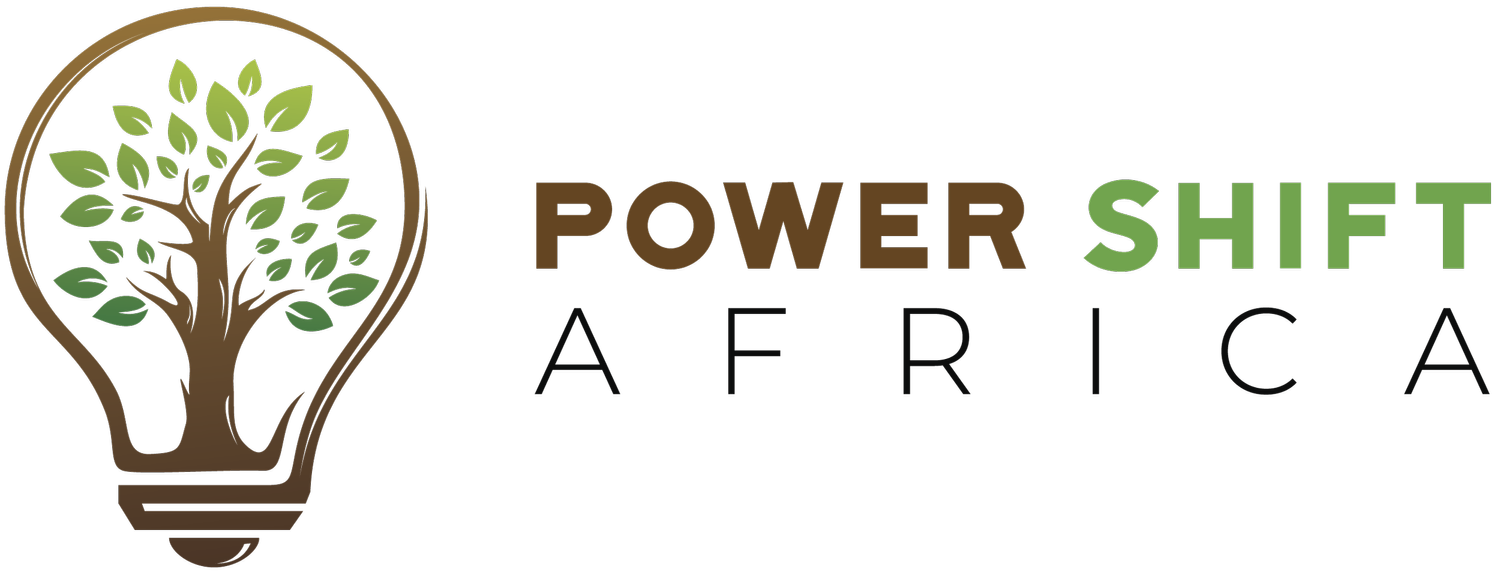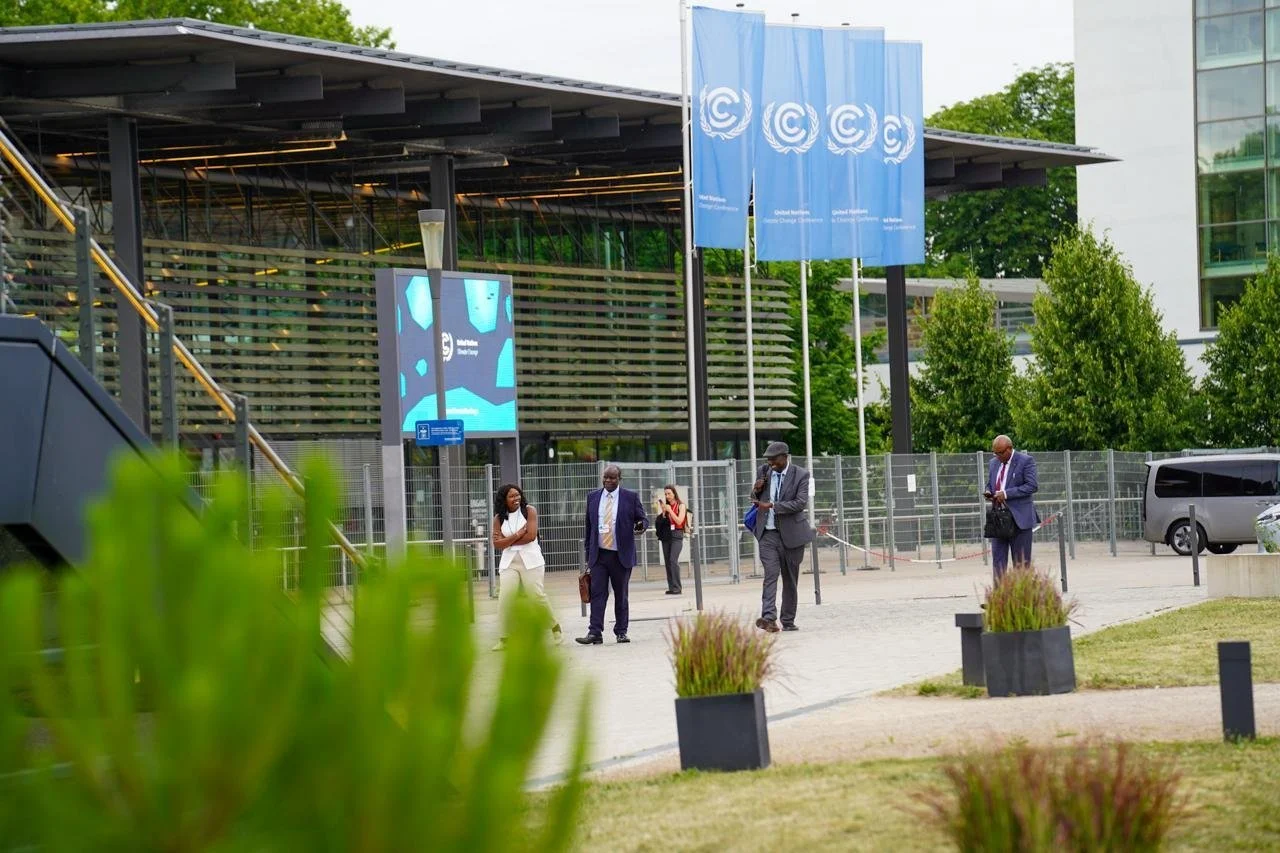Adaptation on the Line: What do SB62 outcomes mean for Africa’s fight for adaptation finance and accountability?
Amy Giliam Thorp
The Global Goal on Adaptation (GGA) has often been described as the North Star for adaptation – a light guiding global efforts and ambition. But for Africa and other Global South developing countries, it’s not the North Star that offers us direction. It’s the Southern Cross.
Like the Southern Cross, the GGA and its 11 targets (7 thematic and 4 related to the adaptation policy cycle) under the UAE-Belem Work Programme and established through the UAE Framework for Global Climate Resilience at COP28, are both a guiding light and lifeline for developing countries. A means to enhance adaptive capacity, strengthen resilience, and reduce vulnerability – but only if they are reflective of global South priorities, lived experiences and support needs.
The GGA’s credibility and effectiveness, though, hinges on whether developing countries receive the necessary global means of implementation (MOI) support, namely finance, capacity building and technology transfer, to implement its targets at the national level.
2025 is also a critical make-or-break political moment for adaptation in terms of both scaling quality finance and agreeing on a final set of indicators to track progress towards the GGA targets. Whether these two adaptation threads are meaningfully linked may determine whether the GGA is effective and delivers real resilience – or remains a distant star in the north, disconnected from the needs of the most vulnerable in the Global South.
With COP30 on the horizon, the Bonn Climate Conference – SB62 – in June, offered a strategic moment to advance the adaptation agenda. In the end, the GGA negotiations became a space where the technical work on indicators to track the targets collided with political divisions between developing and developed countries, especially on finance and other support.
Week One kicked off with a hybrid GGA workshop between experts, Parties and observers on the preliminary indicator list. But initial progress in the first days stalled as Parties struggled to find common ground. By the final day, GGA was the only active agenda item left – negotiations had become tense, complex, and unresolved on several sticking points.
The most contentious of all centred on the fight between developed and developing countries over how the means of implementation (MOI) indicators should be addressed.
''Developed countries wanted to focus on national budgets, thus neglecting the global responsibility towards supporting adaptation,'' said Tlou Ramaru, a GGA negotiator for South Africa.
Africa’s Hopes for SB62: What was on the table?
With a 490-indicator list and under five months to COP30, all eyes were on the GGA negotiations to provide a clear way forward for both experts and the political process. Last year, a group of 78 experts were tasked with developing and refining 100 globally applicable, adaptation-specific indicators under the UAE-Belem Work Programme. Prior to SB62, the experts published a report containing a “shorter” list of 490 indicators, narrowed down from 10,000, which formed the basis for negotiations by Parties.
While noting the significant strides made, several groups including experts, Parties and Civil Society Organisations (CSOs) challenged SB62 to provide more clarity to:
Address process challenges and bottlenecks in how experts select indicators, specifically timeline constraints, unclear responsibilities, and leadership.
A standardized approach for indicator selection and refinement across groups and
Further strengthen and improve the MOI indicators, particularly those on adaptation finance.
Widely seen as the brainchild of the African Group (AGN), a strong outcome on the GGA was a top priority. Tlou noted their main aim was to give guidance to experts on reducing the list of indicators and ensuring MOI was considered in the process. At the Bonn talks, the AGN stressed aligning MOI indicators with Paris Agreement Articles 9.1 (finance), 10 (technology) and 11, and integrating them into the decision on National Adaptation Plans. Linking NAPs and the GGA can help secure greater financial and technical support for adaptation within countries while ensuring national efforts are informed by the global ambition to enhance adaptive capacity and reduce climate vulnerability.
Why finance and MOI indicators matter
As each year passes, the adaptation finance and action gaps continue to widen. Developing countries will need between USD 215-387 billion per year by 2030, yet current flows fall far short – especially for Africa. Despite being a climate vulnerable hotspot, most adaptation finance to the continent comes as loans, worsening debt distress and forcing governments to make impossible tradeoffs between climate action and development.
Without a drastic increase in grant-based, sufficient, affordable, and accessible adaptation finance, developing countries’ efforts will remain stalled and unable to keep pace with escalating climate risks.
Under the UN Framework Convention on Climate Change and Paris Agreement, developed countries have a clear obligation, given their contribution to the climate crisis, to provide support to developing countries - particularly through finance, capacity building, and technology.
Robust, fit-for-purpose MOI indicators can help track whether this support is being delivered fairly and equally, or where barriers to action may lie. They are essential to assess whether finance is truly new, accessible, aligned with national priorities, and whether the systems to deliver this support are working.
''Failure to agree on this will be a blow for the collective assessment of progress on GGA. There will be no scientific process to assess the adaptation gap,'’ Tlou warned.
Who Fought for What?
On the one hand, developing countries fought hard in Bonn to give experts explicit guidance in the decision text on how to refine MOI indicators. They wanted indicators on national budgets and official development assistance (ODA) to be removed and replaced by ones that clearly reference provision of support by developed countries in alignment with Article 9.1 (finance), Article 10 (technology) and Article 11 (capacity building) of the Paris Agreement.
As expected, developed countries, on the other hand, proved reluctant and resistant. Though the US’ absence eased tensions slightly, countries such as the UK, Australia and Japan repeated the same old mantras – enabling factors, national budget indicators, and private finance. These tactics remain developed countries’ go-to strategy to evade their responsibilities and shift the burden to developing nations.
Notably, negotiations on National Adaptation Plans (NAPs) remained deadlocked and unresolved on the exact same issue: MOI support from developed to developing nations for NAP implementation.
At the eleventh hour and the second gaveling of the text, the draft GGA text mandated experts to include MOI indicators, remove those unrelated to the Paris Agreement, and include indicators on access, quality and adaptation finance, including provision, in line with the Paris Agreement.
Though a step in the right direction, the deep divisions on MOI and finance indicators forewarn of a formidable challenge in the lead up to COP30.
A 2025 Showdown – Deadline for Doubling Finance and Indicators
The political significance of 2025 for adaptation cannot be understated. It marks the deadline for developed countries to fulfill their commitment to double adaptation finance under the Glasgow pledge - now in urgent need of a new target - and finalisation of 100 indicators to track the GGA targets by COP30.
These two outcomes are deeply linked. Without strong Means of Implementation indicators, there's no way to assess whether finance is truly additional, accessible, predictable, and aligned with developing countries’ needs. And without a new finance goal, the GGA risks becoming another unfunded mandate.
For years, adaptation has been sidelined to mitigation in multilateral discussions. If we lose momentum now, adaptation support, especially finance, is at risk of being deprioritized yet again.
Further delay and inaction spells disaster for climate vulnerable regions and communities on the frontlines. For these people, adaptation action isn’t an option - it's a necessary lifejacket. One that not only offers protection but can enable them to live with dignity amid rising floods, droughts, heatwaves, and more.
The Road to Belem: What Needs to Happen Now
In the lead up to COP30 in Belem, the following actions must be prioritized by experts, Parties and civil society representatives:
For Experts, Negotiators and Political Leaders:
Finalise the indicator list: The key task ahead of experts is to reduce the 490 list to 100 globally applicable, adaptation relevant indicators. They must also submit the final list to the UNFCCC secretariat in August for Parties and regional blocs to start building consensus, identifying redlines and building bridging positions on sticking points.
Make MOI Indicators Core: Ensure indicators on finance, technology, and capacity support align with the Paris Agreement and are treated as essential for tracking progress towards achieving the GGA. When the political process begins, developing countries must hold the line to retain MOI indicators in the final list adopted at COP30.
Align Indicators with the New Adaptation Finance Goal: Establish a strong linkage between the MOI indicators and the scale of adaptation financed required by calling for adoption of a post-2025 adaptation finance target to anchor real accountability. Global South stakeholders must play a key role in fostering dialogue opportunities between adaptation and finance negotiators to strengthen their coordination.
Secure Political Backing: Push ministers to prioritize adaptation finance and safeguard strong MOI language in COP30 outcomes as a key ingredient that anchors real finance and accountability in the delivery of both the NCQG and the Baku-Belém Roadmap to $1.3T.
Global South Stakeholders:
Strengthen and Assert Global South Political Leadership: Global South groups must leverage the remaining 2025 milestones (e.g. African Climate Week, African Climate Summit and G20) to push for adaptation priorities. A unified global South voice on adaptation is key and could be achieved through stronger coordination across civil society, institutions and G77+China.
Embed local realities in GGA implementation: Although much focus will centre on global indicators, global South groups must push for GGA indicators, particularly on MOI, that reflect community needs, enable local decision-making, and link grassroots action to national priorities and investment plans.
What’s at stake is whether the GGA delivers real resilience – or remains another empty, unfunded promise. For the Global South, the GGA must be our Southern Cross, not just symbolic or a distant star in the north. It must be a true guide grounded in lived realities, genuine support and action.
Amy Giliam Thorp is the Programs Manager at Power Shift Africa



